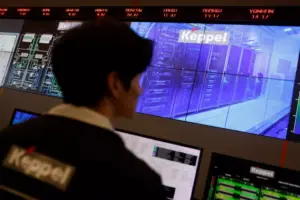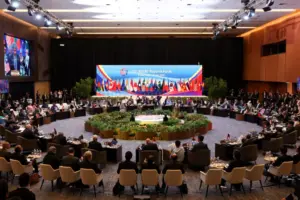Southeast Asia’s undersea cables under great power pressure
As Southeast Asia becomes increasingly entangled in great power competition, the vulnerabilities of undersea cables are becoming harder to ignore. Cable disruptions in Northern Europe and Taiwan show how undersea cables can be weaponised in grey zone competition. The deeper problem for the region is structural dependence on foreign powers to build, upkeep and repair undersea cables.
Nearly all of Southeast Asia’s internet connectivity depends on fragile fibre-optic cables. Any disruption would have significant consequences for the region’s digital economy. While deliberate sabotage has not been proven in Southeast Asia, intensifying great power competition and its contested maritime space make it a risk the region must prepare to confront.
The risk is particularly high in the South China Sea, the centre of diplomatic tensions between China and several ASEAN states for over two decades. Beijing has tightened approval requirements for building and maintaining undersea cables within its ‘nine-dash line’ claim. In April 2024, a Vietnamese cable-repair crew operating within Hanoi’s exclusive economic zone was confronted by Chinese coast guard vessels — an incident widely viewed as pressure on operators working in waters claimed by China. Incidents like this raise costs, delay repairs and deter investment in already vulnerable infrastructure.
The US–China rivalry has disrupted several vital cable projects in the region. The Bay to Bay Express Cable System, intended to connect Hong Kong, Southeast Asia and the United States, was blocked after Washington rejected a Hong Kong landing and Chinese participation.
The Southeast Asia–Japan 2 undersea cable, connecting Singapore, Hong Kong and Japan, was scheduled to go live in 2020 but entered service in 2025 after years of delay. Beijing’s permit demands for construction in waters it claims as its territory — beyond internationally recognised borders — forced a reroute through the Philippines and Indonesia. Together, these cases show how little leverage Southeast Asian governments hold over digital infrastructure within their own region.
This lack of leverage has long defined Southeast Asia’s underwater cable infrastructure, but the balance is beginning to shift as geopolitical rivalry redraws the boundaries of participation. The days when Chinese firms joined regional consortia alongside US companies are long gone. Projects are now as much political as they are commercial, and at times politics clearly dominates.
For example, the United States’ 2020 ‘Clean Network’ initiative and the Federal Communications Commission enacted in 2025 prohibits Chinese companies from engaging in US-owned undersea cables. Southeast Asia, which has predominantly followed a pragmatic and non-aligned stance, may soon be forced to choose between a US-led or China-led undersea cable regime. Alignment with one could exclude participation in the other.
This raises the question — if Southeast Asia were forced to choose, which side should it align with? China has staked clear digital ambitions through the Digital Silk Road, alongside emergent Chinese firms like HMN Tech and FiberHome which already have a strong presence in Southeast Asia. With low-pricing strategies, these firms have progressively infiltrated a market historically controlled by Western and Japanese companies. Despite Washington’s diplomatic efforts to dissuade Southeast Asian governments from awarding contracts to Chinese suppliers, many have prioritised the cost advantages of proceeding with Beijing-backed bids.
But costs are not the only consideration. The region must weigh privacy concerns and the risk of sabotage, particularly given Beijing’s record. Equally important are questions of maintenance and repair in contested waters, which could generate operational hurdles for cable operators and drive up long-term costs.
Calls to diversify Southeast Asia’s cable supply are easy to make, though implementation is harder. The global undersea cable market — and Southeast Asia’s by extension — is dominated by a few players. In the region, lead shares sit with Japan (41 per cent), the United States (20 per cent), China (19 per cent), France (18 per cent) and Germany (2 per cent). Despite the steady rise of Chinese telecom firms, the United States and its allies remain the primary players in Southeast Asia’s cable landscape.
Territory also matters. Unlike China’s ‘nine-dash line’ claim, the United States and its allies make no competing claims over Southeast Asian waters, reducing friction for undersea cable activities in the region. For this reason, losing access to the US-anchored regime would pose greater risks than switching to cheaper Chinese options.
In the short term, alignment with the United States remains safer. In the long term, the region must empower its own telecom giants, such as Singtel, PLDT and Telekom Malaysia, to reduce its dependence and strengthen Southeast Asia’s agency in shaping its digital future.
Patrick Kurniawan is Visiting Research Fellow at the Center for Southeast Asian Studies, National Chengchi University and Science and Technology Fellow at the Center for Business and Diplomatic Studies, Binus University.
Source: East Asia Forum





